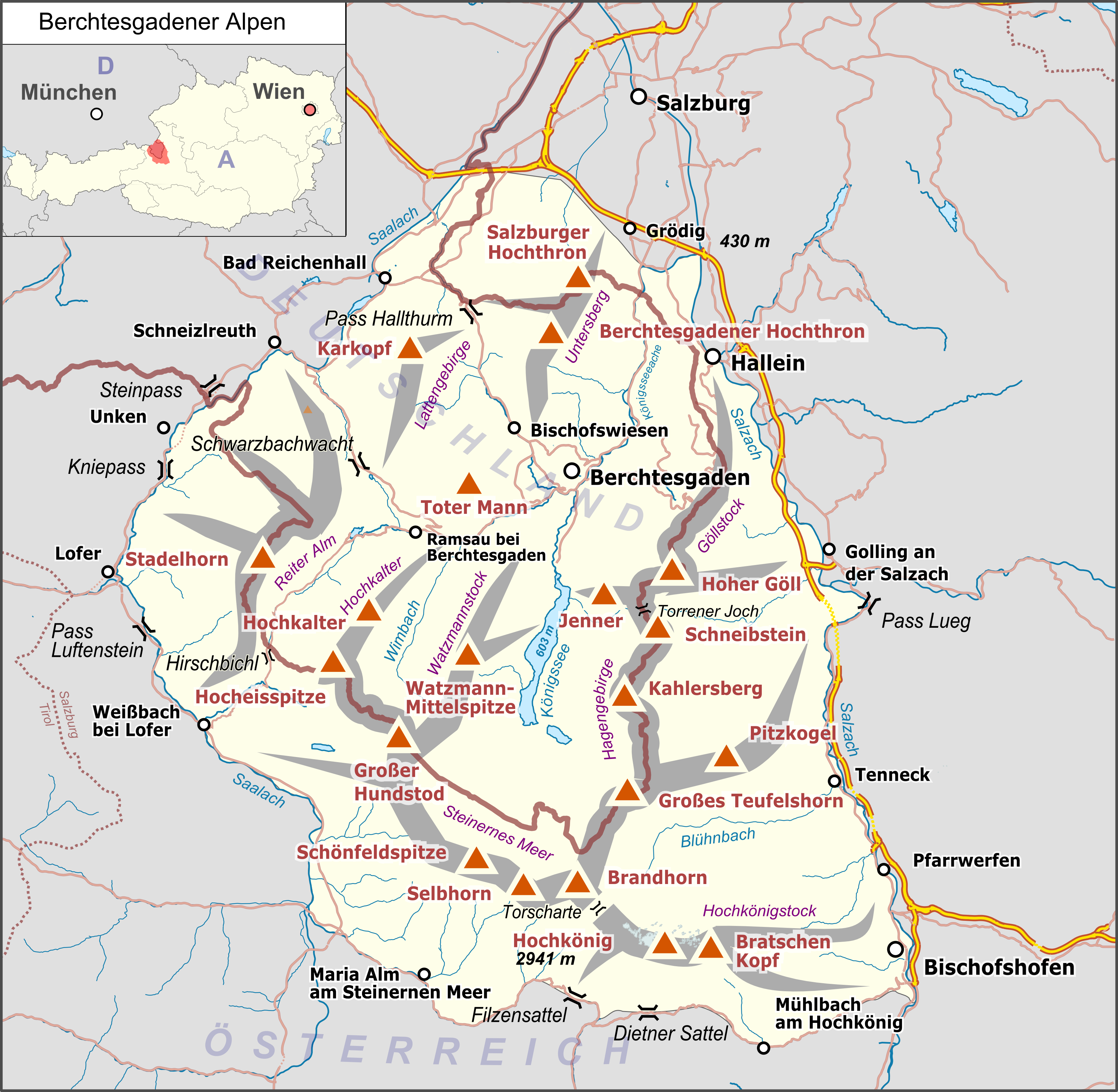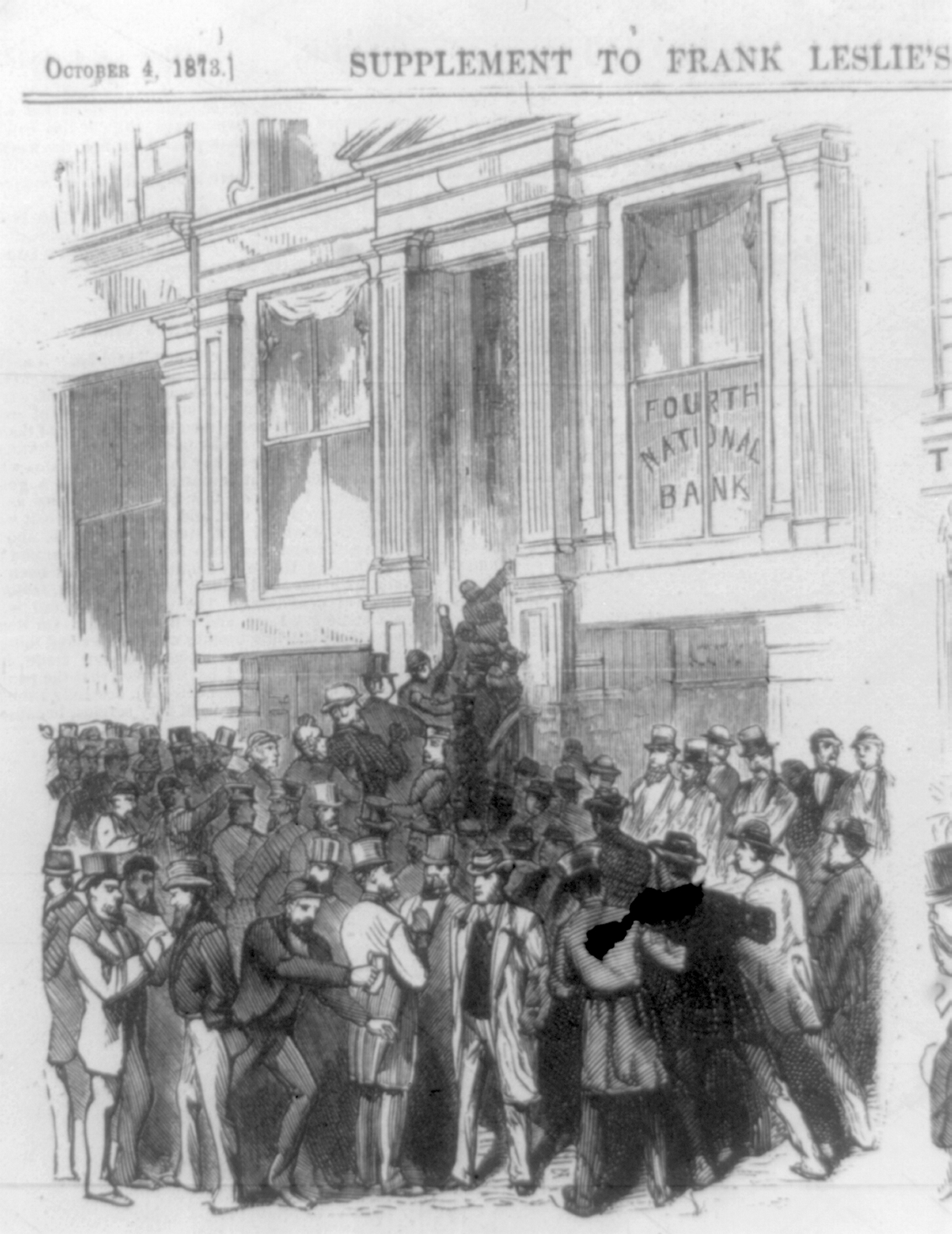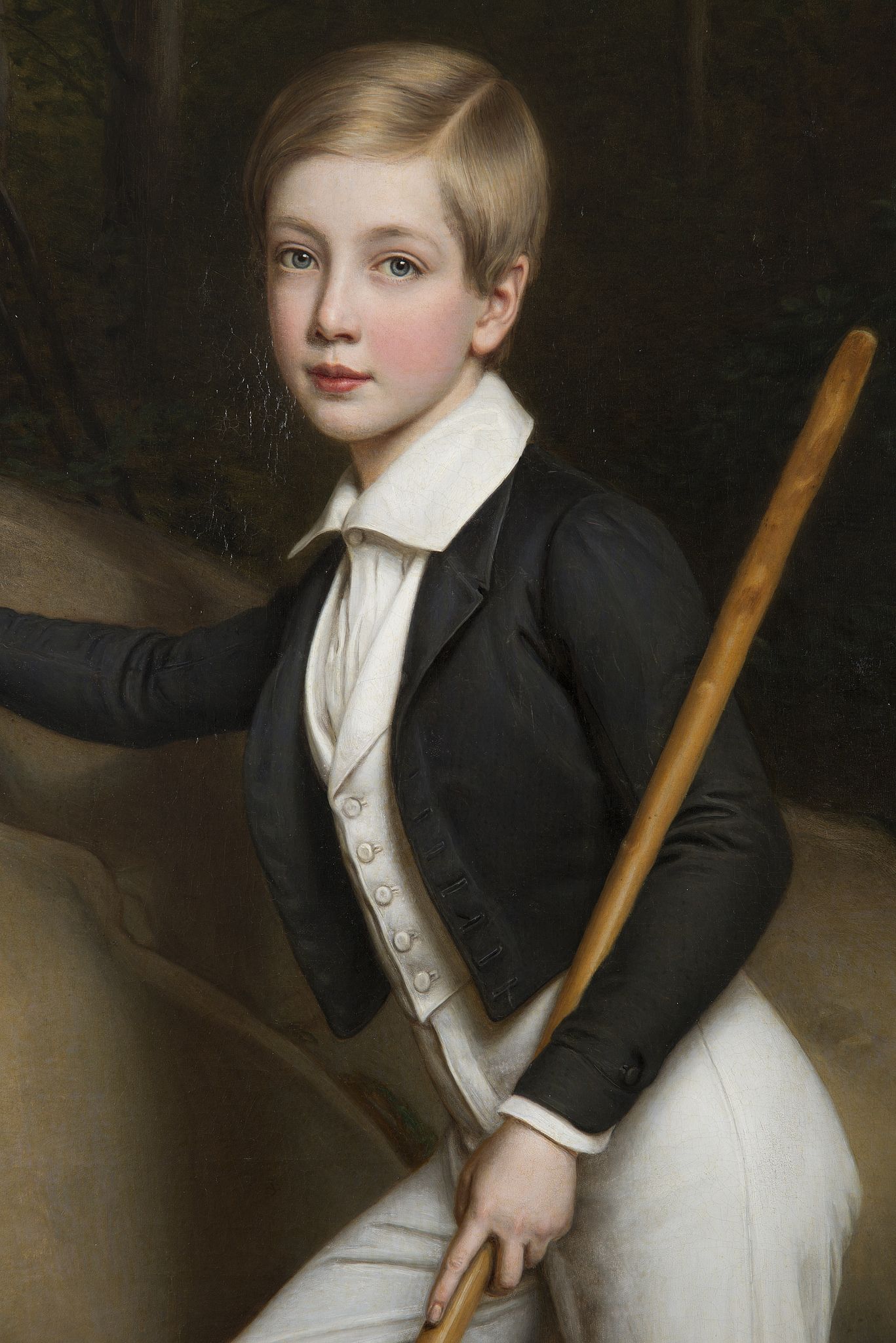|
Anton Hansch
Anton Hansch (born 24 March 1813 in Vienna; died 8 December 1876 in Salzburg) was an Austrian landscape painter. His work is included in the permanent collections of the Kunsthistorisches Museum, the Museum of Fine Arts, Budapest; the Salzberg Museum, the Lichtenstein Museum Princely Collection, the Vienna Museum among other institutions. Early life Hansch was born in Vienna in 1813, to a family who ran a fashion and artificial flower factory. They considered this a part of his training to attend the Vienna Academy to become a flower painter. Prior to 1837, before becoming a landscape painter, Hansch made artificial flowers. Biography He was a pupil of Josef Mössmer at the Academy of Vienna from 1826–1836. After his schooling he traveled and studied in Germany, Austria, Belgium, Switzerland, and Italy. His early works consist of landscapes that were painted in a baroque classicist style. Later, in the 1830s and 40s he began to paint in a more naturalistic tradition tha ... [...More Info...] [...Related Items...] OR: [Wikipedia] [Google] [Baidu] |
Vienna Künstlerhaus
The Künstlerhaus in Vienna's 1st district has accommodated the Künstlerhaus Vereinigung since 1868. It is located in the Ringstrassenzone in between Akademiestraße, Bösendorferstraße and Musikvereinsplatz. The building was erected between 1865 and 1868 and has served as an exhibition space and an event venue ever since. In 2015, shares were split between two proprietors, with the Haselsteiner Familien-Privatstiftung as the majority shareholder and the Künstlerhaus Vereinigung'','' Gesellschaft bildender Künstlerinnen und Künstler Österreichs, the oldest existing artists' association in Austria, as the minority shareholder. In 1949 a cinema moved into the western wing of the building. As of 2013, this cinema is operated as ''Stadtkino im Künstlerhaus'' and is one of the screening venues for the annual Viennale film festival. Additionally, a theatre was established in the eastern wing in 1974, which was last operated by the ''brut'' until 2017. Between autumn 2016 and ... [...More Info...] [...Related Items...] OR: [Wikipedia] [Google] [Baidu] |
1813 Births
Events January–March * January 5 – The Danish state bankruptcy of 1813 occurs. * January 18– 23 – War of 1812: The Battle of Frenchtown is fought in modern-day Monroe, Michigan between the United States and a British and Native American alliance. * January 24 – The Philharmonic Society (later the Royal Philharmonic Society) is founded in London. * January 28 – Jane Austen's '' Pride and Prejudice'' is published anonymously in London. * January 31 – The Assembly of the Year XIII is inaugurated in Buenos Aires. * February – War of 1812 in North America: General William Henry Harrison sends out an expedition to burn the British vessels at Fort Malden by going across Lake Erie via the Bass Islands in sleighs, but the ice is not hard enough, and the expedition returns. * February 3 – Argentine War of Independence: José de San Martín and his Regiment of Mounted Grenadiers gain a largely symbolic victory agains ... [...More Info...] [...Related Items...] OR: [Wikipedia] [Google] [Baidu] |
Landl
Landl is a municipality in the district of Liezen in the Austrian state of Styria. Second World War History Late in the Second World War a group of about 70 Wehrmacht The ''Wehrmacht'' (, ) were the unified armed forces of Nazi Germany from 1935 to 1945. It consisted of the German Army (1935–1945), ''Heer'' (army), the ''Kriegsmarine'' (navy) and the ''Luftwaffe'' (air force). The designation "''Wehrmac ... soldiers that were scattered on the march back and were looking for their troop units. They were stopped outside of the village and put before a drumhead court-martial. They were suspected of being deserters, because they were marching unorganized, carrying enemy infantry weapons, marching away from the front, and their papers and orders were disorganized. Being found guilty all men were executed on 12 April 1945. Today their grave stones lay in war graves on a cemetery next to a yellow chapel, a memorial place. Geography Landl lies in the valley near the confluence ... [...More Info...] [...Related Items...] OR: [Wikipedia] [Google] [Baidu] |
Residenzgalerie
The Residenzgalerie is an art gallery in the Alte Residenz, Salzburg, Austria. Its collection includes works by Rembrandt, Carel Fabritius, Carlo Saraceni and Hieronymus Francken II. History The state-owned Residenzgalerie provides a cross-section of painting from the 16th to the 19th centuries. It bears similarities with the extensive painting collection of Prince-Archbishop Hieronymus Colloredo, which was exhibited during his era (late 18th century) in rooms that are now the Residenzgalerie. After 1800, however, this collection was repeatedly plundered during the French Wars. In the age of the monarchy, many of the works were transferred from Salzburg to Vienna. A new collection was proposed shortly after the First World War by a group of Salzburg artists, and the Residenzgalerie was opened in 1923. Apart from reinstating a permanent collection for Salzburg, the new gallery was also intended to be used by an art academy (never founded), encourage tourism, and provide ... [...More Info...] [...Related Items...] OR: [Wikipedia] [Google] [Baidu] |
Hintersee, Austria
Hintersee is a municipality in the district of Salzburg-Umgebung in the state of Salzburg in Austria Austria, formally the Republic of Austria, is a landlocked country in Central Europe, lying in the Eastern Alps. It is a federation of nine Federal states of Austria, states, of which the capital Vienna is the List of largest cities in Aust .... Geography The municipality lies in the Flachgau on the Tauglbach (Lämmerbach). References Cities and towns in Salzburg-Umgebung District {{Salzburg-geo-stub ... [...More Info...] [...Related Items...] OR: [Wikipedia] [Google] [Baidu] |
Chiemsee
Chiemsee () is a freshwater lake in Bavaria, Germany, near Rosenheim. It is often called "the Bavarian Sea". The rivers Tiroler Achen and Prien (river), Prien flow into the lake from the south, and the river Alz flows out towards the north. The Alz flows into the Inn (river), Inn which then merges with the Danube. The Chiemsee is divided into the bigger, north section, in the northeast, called , and the , in the southwest. The Chiemgau, the region surrounding the Chiemsee, is a popular recreation area. Origin The Chiemsee was formed, like many other pre-alpine lakes, at the end of the last ice age about 10,000 years ago from a hollow carved out by a glacier (a ). Originally the lake covered an area of almost , which is about three times its present area. Within 10,000 years its area had shrunk to around . Before 1904 the water level was lowered by about a metre. As a result, large areas of dry land were reclaimed. Islands There are three main islands on the lake: Herrenin ... [...More Info...] [...Related Items...] OR: [Wikipedia] [Google] [Baidu] |
Königssee
The Königssee () is a natural lake in the southeast Berchtesgadener Land district of the German state of Bavaria, near the Austrian border. Most of the lake is within the Berchtesgaden National Park. Description Situated within the Berchtesgaden Alps in the municipality of Schönau am Königsee, just south of Berchtesgaden and the Austrian city of Salzburg, the Königssee is Germany's third deepest lake. Located at a Jurassic rift, it was formed by glaciers during the last ice age. It stretches about in a north-south direction and is about across at its widest point. Except at its outlet, the Königsseer Ache at the village of Königssee, the lake is similar to a fjord, being surrounded by the steeply-rising flanks of mountains up to , including the Watzmann massif in the west. The literal translation of the name, Königssee, appears to be "king's lake"; however while does indeed mean "king", there had been no Bavarian kings since the days of Louis the German (d. 876 ... [...More Info...] [...Related Items...] OR: [Wikipedia] [Google] [Baidu] |
Berchtesgaden Alps
The Berchtesgaden Alps (, ) are a mountain range of the Northern Limestone Alps, named after the market town of Berchtesgaden located in the centre. It is crossed by the Austria–Germany border: the central part belongs to the Berchtesgadener Land district of southeastern Bavaria, Germany, while the adjacent area in the north, east and south is part of the Austrian state of Salzburg (state), Salzburg (''Salzburger Land''). Geography Mountains and lakes While the highest mountain of the Berchtesgaden Alps is the Hochkönig () located in the Austrian part, the best known peak is the Watzmann massif, the third-highest mountain of Germany at . The range also comprises the Obersalzberg slope east of Berchtesgaden, known for the former Berghof (residence), Berghof residence of Adolf Hitler. The picturesque heart is formed by the glacial Königssee lake with the famous St. Bartholomew's Church, Berchtesgaden, St. Bartholomew's pilgrimage church and the smaller Obersee (Königssee), O ... [...More Info...] [...Related Items...] OR: [Wikipedia] [Google] [Baidu] |
Golling An Der Salzach
Golling an der Salzach is a market town in the Hallein district of Salzburg, Austria. Geography It is located on the southern rim of the ''Tennengau'' region south of the city of Salzburg. Here at the confluence of the Salzach and its Lammer tributary, the river leaves the Salzachöfen Gorge between the Berchtesgaden Alps and the Tennen Mountains ranges of the Northern Limestone Alps and flows northwards into the broad Salzburg basin. The Hoher Göll massif of the Berchtesgaden Alps in the west comprise the Schwarzbachfall Cave and the high Golling Waterfall, a natural monument. Parallel to the Salzach River, the historic Salzachtal Straße enters the narrow gorge at Lueg Pass. Golling station is a stop on the Salzburg-Tyrol Railway, served by ÖBB trains and the Salzburg suburban S-Bahn network. The market town also has access to the Tauern Autobahn (A10) from Salzburg to Villach. The municipal area comprises the cadastral communities of Golling, Torren, and Obergäu. ... [...More Info...] [...Related Items...] OR: [Wikipedia] [Google] [Baidu] |
Panic Of 1873
The Panic of 1873 was a financial crisis that triggered an economic depression in Europe and North America that lasted from 1873 to 1877 or 1879 in France and in Britain. In Britain, the Panic started two decades of stagnation known as the "Long Depression" that weakened the country's economic leadership. In the United States, the Panic was known as the "Great Depression" until the events of 1929 and the early 1930s set a new standard. The Panic of 1873 and the subsequent depression had several underlying causes for which economic historians debate the relative importance. American inflation, rampant speculative investments (overwhelmingly in railroads), the demonetization of silver in Germany and the United States, ripples from economic dislocation in Europe resulting from the Franco-Prussian War (1870–1871), and major property losses in the Great Chicago Fire (1871) and the Great Boston Fire (1872) helped to place massive strain on bank reserves, which, in New York ... [...More Info...] [...Related Items...] OR: [Wikipedia] [Google] [Baidu] |
Maximilian I Of Mexico
Maximilian I (; ; 6 July 1832 – 19 June 1867) was an Austrian Empire, Austrian archduke who became Emperor of Mexico, emperor of the Second Mexican Empire from 10 April 1864 until his execution by the Restored Republic (Mexico), Mexican Republic on 19 June 1867. A member of the House of Habsburg-Lorraine, Maximilian was the younger brother of Emperor Franz Joseph I of Austria. Before becoming Emperor of Mexico, he was commander-in-chief of the small Imperial Austrian Navy and briefly the Austrian viceroy of Kingdom of Lombardy–Venetia, Lombardy–Venetia, but was removed by the emperor. Two years before his dismissal, he briefly met with French emperor Napoleon III in Paris, where he was approached by Conservative Party (Mexico), conservative Monarchism in Mexico, Mexican monarchists seeking a European royal to rule Mexico. Initially Maximilian was not interested, but following his dismissal as viceroy, the Mexican monarchists' plan was far more appealing to him. Since Maxim ... [...More Info...] [...Related Items...] OR: [Wikipedia] [Google] [Baidu] |






